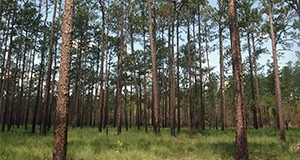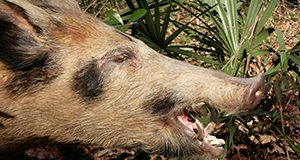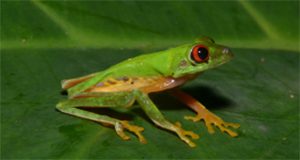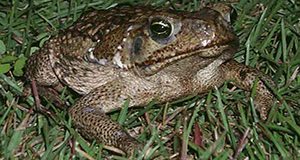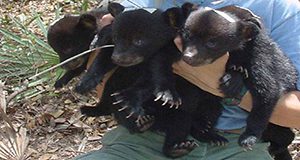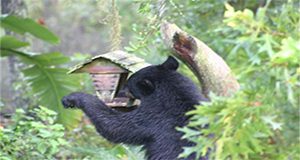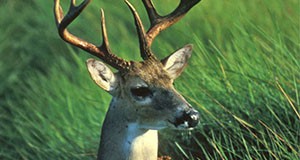Non-native reptile species breeding in Florida, tegus, monitors, and iguanas from Africa, South America, Central America, and Mexico, currently outnumber native Florida reptiles. This trifold brochure written by Justin Dalaba and Frank Mazzotti and published by the UF/IFAS Wildlife Ecology and Conservation Department serves as a guide to several commonly confused species.
http://edis.ifas.ufl.edu/uw459
Tag: Wildlife Ecology and Conservation Department
BioBlitzes: Citizen Science for Biodiversity in Florida
This 5-page fact sheet written by Mathieu Basille and Kathryn Stofer and published by the UF/IFAS Wildlife Ecology and Conservation Department is the first of a series designed to help Extension faculty and others interested in hosting citizen-science events known as BioBlitzes. Together, these documents will assist organizers in launching events in their regions, recruiting participants, and sustaining the program over time. This document will focus on the background and purpose of BioBlitzes to help these hosts understand and share with potential participants and other stakeholders the importance and value of the events. Other documents will focus on the details of organizing the events and, for participants, why and how they can get involved.
http://edis.ifas.ufl.edu/uw449
Early Detection and Rapid Response (EDRR) to Nonnative Wildlife in South Florida
Invasive nonnative wildlife threaten successful restoration of Everglades ecosystems in south Florida. If nothing is done while an invasion is in the beginning stages, populations can grow and become much more difficult to manage, as happened with the Burmese pythons. This 4-page fact sheet written by Justin R. Dalaba and Frank J. Mazzotti and published by the UF/IFAS Wildlife Ecology and Conservation Department explains how the Early Detection and Rapid Response method works and how to apply it to increase the likelihood that an invasion will be successfully contained or eradicated while an invasive population is still small and localized.
http://edis.ifas.ufl.edu/uw454
Basic Steps to Creating a Conservation Land Trust in Florida
Conservation land trusts, more commonly called land trusts, are private 501(c)(3) nonprofit organizations that protect land important to your community for its natural, cultural, and recreational value. These publicly supported organizations also sustain healthier and more resilient economic development in your community and throughout the state. This 5-page fact sheet written by Benjamin W. North, Elizabeth Frances Pienaar, and Jessica D. Sullivan and published by the UF/IFAS Wildlife Ecology and Conservation Department outlines the basic steps to creating a land trust and provides links to the necessary documents and resources that will assist you in creating a land trust.
http://edis.ifas.ufl.edu/uw448
Feral Swine Trapping: Techniques and Designs
Feral swine are an invasive or nuisance species in Florida and most other states because their incessant rooting is ruinous to natural and agricultural habitat. They loosen the soil, destroy native vegetation, and modify the natural chemistry and nutrients of the soil, causing widespread destruction in natural ecosystems, agricultural areas, livestock pastures, and residential areas. They also carry numerous diseases, some of which are transmittable to wild and domestic animals and humans. Trapping and removing swine from your property is an effective way to reduce or control feral swine populations. This 9-page fact sheet written by Bethany Wight and Raoul K. Boughton and published by the UF/IFAS Wildlife Ecology and Conservation Department describes the most commonly used trapping techniques and illustrates several trap and gate designs.
https://edis.ifas.ufl.edu/uw440
Frogs and Toads of Northern Belize
Belize is home to several threatened frog species. One of them, the Maya mountains frog, lives nowhere else in the world. This 4-page fact sheet written by Jenna M. Cole, Sarah K. Cooke, Venetia S. Briggs-Gonzalez, Justin R. Dalaba, and Frank J. Mazzotti and published by the UF/IFAS Wildlife Ecology and Conservation Department will help you identify your frogs and toads in order to better protect them.
http://edis.ifas.ufl.edu/uw439
The Cane or "Bufo" Toad (Rhinella marina) in Florida
Cane toads are an invasive species in Florida and in many countries around the world. They have been established in Florida since the 1950s. Cane toads are larger and more poisonous than Florida’s native toads; they can be fatal to dogs that try to eat them, and they may be harmful to Florida’s native species. Discover the history of cane toads in Florida and learn to distinguish them from native toads. Find out the impacts they can have on both ecosystems and people, and get tips on how to deal with them in yards and neighborhoods in this 6-page publication written by Steve Johnson and Audrey Wilson and published by the Wildlife Ecology and Conservation Department.
http://edis.ifas.ufl.edu/uw432
Reducing Human-Bear Conflicts: Bear-Resistant Trash Cans
The Florida black bear (Ursus americanus floridanus) is the only species of bear in Florida, with an estimated population of approximately 4,030 bears. Bears that eat garbage put themselves in danger. This 3-page fact sheet written by Ethan T. Noel, Elizabeth F. Pienaar, and and Mike Orlando and published by the Wildlife Ecology and Conservation Department explains how to secure human garbage from bears so that they don’t become reliant on human food sources, a condition that puts them at great risk of being killed from vehicle collisions, illegal shooting, or euthanasia.
http://edis.ifas.ufl.edu/uw429
Securing Bird Feeders from Florida Black Bears
The Florida black bear (Ursus americanus floridanus) is the only species of bear in Florida, with an estimated population of approximately 4,030 bears. Bears are excellent climbers and can access bird feeders that are suspended from trees. This 3-page fact sheet written by Ethan T. Noel and Elizabeth F. Pienaar and published by the Wildlife Ecology and Conservation Department explains how to secure bird seed from bears so that they don’t become reliant on human food sources, a condition that puts them at greater risk of being killed from vehicle collisions, illegal shooting, or euthanasia.
http://edis.ifas.ufl.edu/uw430
Building for Birds Evaluation Tool: Breeding and Wintering Habitat for Forest Birds
Several bird species use forest fragments and trees conserved in built areas as breeding, wintering, and stopover habitat. Scientists have created a Building for Birds online tool to help these birds and the people who appreciate them. This evaluation tool is most useful for small developments or developments in already fragmented landscapes.
The tool is designed for use when no opportunity is available to conserve large forest areas of 125 acres or more within a proposed development. Developers are sometimes reluctant to conserve trees and forest fragments in subdivided residential/commercial areas because it costs time and money, but there is value in this conservation effort not only for many different species of forest birds, but for future homeowners waking to birdsong in the mornings.
This 17-page fact sheet written by Mark Hostetler and Jan-Michael Archer and published by the Department of Wildlife Ecology and Conservation describes the online tool and shows how it can help preserve breeding and wintering habitat for migrating birds.
http://edis.ifas.ufl.edu/uw417
Freshwater Fish of New River, Belize
Belize is home to an abundant diversity of freshwater fish species and is often considered a fishing paradise. The New River area is a popular freshwater fishing destination in the Orange Walk district of northern Belize. Here locals and visitors alike take to the lagoons and waterways for dinner or for good sportfishing. This 3-page guide written by Venetia Briggs-Gonzalez, Kyle Allen, and Frank J. Mazzotti and published by the Wildlife Ecology and Conservation Department highlights the most popular species in the area and will help people identify and understand these species.
http://edis.ifas.ufl.edu/uw406
Facts about Wildlife Diseases: Leprosy
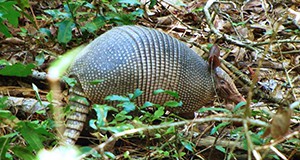
Worldwide, 250,000 new cases of leprosy are reported each year, and in the United States, approximately 150 new cases of leprosy are diagnosed each year. Also known as Hansen’s disease, leprosy (Mycobacterium leprae) is a bacterial disease that infects the skin and nerves, causing disfiguring skin sores, nerve damage, and occasionally lung damage if left untreated. Leprosy is spread between humans via respiratory droplets when people sneeze or cough. In the southeast United States, handling armadillos is thought to be the source of many infections. This 4-page fact sheet written by Shannon P. Moore and Samantha M. Wisely and published by the Wildlife Ecology and Conservation Department describes the disease in humans and armadillos and explains how to avoid it and limit its spread.
http://edis.ifas.ufl.edu/uw408
Conservation Subdivision: Post-construction Phase: Creating Signs to Educate Residents
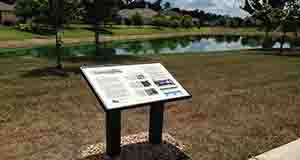
Installing educational signs is one way to increase awareness and participation in conservation activities. This six-page fact sheet written by Mark Hostetler and published by the Department of Wildlife Ecology and Conservation explains how to create educational signs and install them in residential neighborhoods as a way to inform residents about biodiversity conservation. The fact sheet, one of the UF/IFAS Conservation Subdivision series, explains how to design effective signs, how to manage a series of signs to keep the information fresh, and how to maintain the signs to ensure that residents and visitors to the community continue to benefit and maintain their homes, yards, and neighborhoods sustainably for years to come.
http://edis.ifas.ufl.edu/uw407
Rancher Perceptions of the Coyote in Florida
Throughout the continental United States and large portions of Canada and Central America, changes people make to the landscape such as the clearing of forested land and the extermination of larger predators like gray and red wolves have made the environment perfect for the adaptive coyote. Coyotes have rapidly taken advantage of these environmental shifts and expanded into new areas, now including all 67 counties in Florida and even Key Largo. Each year more people in Florida catch a glimpse of a coyote crossing a road or running across open fields, or notice coyote scat along a hiking trail–and farmers and ranchers are seeing signs of coyotes on their farms.
As coyotes become a fixture of the Florida landscape, potential grows for conflict with humans. Coyotes are in Florida to stay, and understanding the agricultural community’s perception of their influence on livestock and wildlife is important to developing effective policies for coyote management. This 4-page fact sheet written by Raoul K. Boughton, Bethany Wight, and Martin B. Main and published by the Wildlife Ecology and Conservation Department provides results of ongoing statewide surveys of ranchers in Florida regarding the influence of coyotes on their operations.
Safe Harbor Agreement: A Regulatory Assurance under the Endangered Species Act
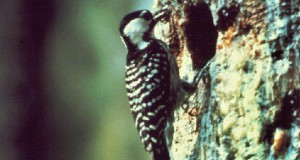
The involvement of the private sector is critical for the conservation and recovery of many species, but landowners’ fears that increased management restrictions could keep them from enjoying their land can present a challenge to securing their trust and assistance in conservation efforts. A Safe Harbor Agreement is a regulatory assurance that removes the risk of additional regulation in the future and encourages landowners to maintain important habitat on their lands. This three-page publication written by Melissa M. Kreye, Elizabeth F. Pienaar, Raoul K. Boughton, and Lindsey Wiggins and published by the Wildlife Ecology and Conservation Department provides Extension agents, decision-makers, and landowners with a basic understanding of a landowner’s obligations and the benefits of enrolling.
http://edis.ifas.ufl.edu/uw403
The Argentine Black and White Tegu in South Florida: Population Growth, Spread, and Containment
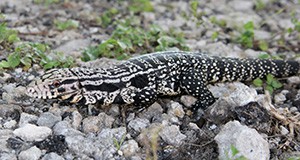
Florida is home to more nonnative species of reptiles and amphibians than anywhere else in the world because of its subtropical climate, large areas of disturbed habitats, and thriving trade in exotic pets. Although pythons have received the majority of public attention, invasive lizards also pose a significant threat to south Florida’s native wildlife and ecosystems, and a good example is the Argentine black and white tegu. Learn more about this exotic lizard in this 3-page fact sheet written by Rebecca G. Harvey and Frank J. Mazzotti and published by the Wildlife Ecology and Conservation Department.
http://edis.ifas.ufl.edu/uw405
Biology of the Hicatee: A Critically Endangered River Turtle of Belize
The hicatee (Dermatemys mawii) is a Central American river turtle and one of the 25 most endangered turtle species in the world. Over-hunting for meat, eggs, and shells is driving the turtles toward extinction. This 3-page fact sheet about the hicatee includes its natural history, reproductive habits, and ecology and describes the international conservation efforts to save the fascinating but fast-disappearing turtle. Written by Venetia Briggs-Gonzalez, Nathan Schwartz, Rebecca G. Harvey, and Frank J. Mazzotti and published in November 2015 by the Wildlife Ecology and Conservation Department.
http://edis.ifas.ufl.edu/uw404
Facts about Wildlife Diseases: Rabies
 Rabies is a virus carried by mammals. It kills infected humans and animals if they are not treated shortly after exposure. Rabies can be prevented, but it cannot be cured once symptoms become evident. This 6-page fact sheet explains how rabies spreads, which animals can get it, how common it is, symptoms, what you can do to limit its spread and what to do in case of a possible rabies exposure. Written by Samantha M. Wisely and Holly K. Ober, and published by the UF Department of Wildlife Ecology and Conservation, June 2015.
Rabies is a virus carried by mammals. It kills infected humans and animals if they are not treated shortly after exposure. Rabies can be prevented, but it cannot be cured once symptoms become evident. This 6-page fact sheet explains how rabies spreads, which animals can get it, how common it is, symptoms, what you can do to limit its spread and what to do in case of a possible rabies exposure. Written by Samantha M. Wisely and Holly K. Ober, and published by the UF Department of Wildlife Ecology and Conservation, June 2015.
http://edis.ifas.ufl.edu/uw282
Managing Conflicts with Wildlife: Living with Deer
Though deer rarely pose problems for people, it is important to understand the issues associated with deer and human-deer interactions. This 4-page fact sheet describes the biology of Florida’s white-tailed deer, the hazards associated with deer, and how to minimize these risks. Written by William M. Giuliano, Holly K. Ober, Lauren Watine, and Raoul Boughton, and published by the UF Department of Wildlife Ecology and Conservation, December 2014.
http://edis.ifas.ufl.edu/uw398
Managing Conflicts with Wildlife: Living with Coyotes
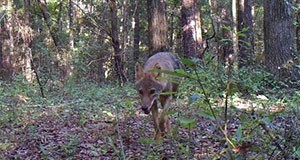 The omnivorous coyote is a relative newcomer to Florida that plays an important role in ecosystems and food webs. Of particular importance and possible benefit may be their potential ability to control populations of pest species such as some rodents. Although rare, there are situations where coyotes can become dangerous or damaging. In this 4-page fact sheet, we present some facts about coyotes, describe dangers and problems they may cause, and provide suggestions on how to cope with these issues. Written by Lauren Watine, William M. Giuliano, Holly K. Ober, Raoul Boughton, Alexander Gulde, Angeline Scotten, and published by the UF Department of Wildlife Ecology and Conservation, December 2014. (Photo: W. M. Giuliano, UF/IFAS)
The omnivorous coyote is a relative newcomer to Florida that plays an important role in ecosystems and food webs. Of particular importance and possible benefit may be their potential ability to control populations of pest species such as some rodents. Although rare, there are situations where coyotes can become dangerous or damaging. In this 4-page fact sheet, we present some facts about coyotes, describe dangers and problems they may cause, and provide suggestions on how to cope with these issues. Written by Lauren Watine, William M. Giuliano, Holly K. Ober, Raoul Boughton, Alexander Gulde, Angeline Scotten, and published by the UF Department of Wildlife Ecology and Conservation, December 2014. (Photo: W. M. Giuliano, UF/IFAS)
http://edis.ifas.ufl.edu/uw397



